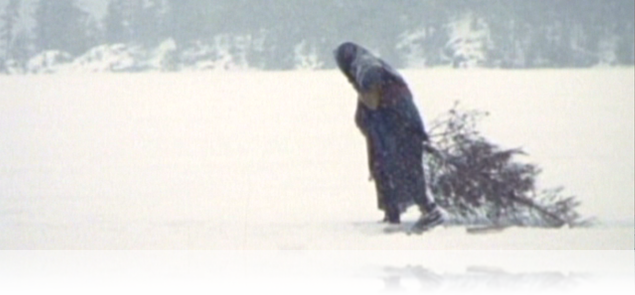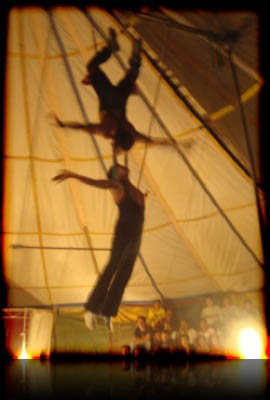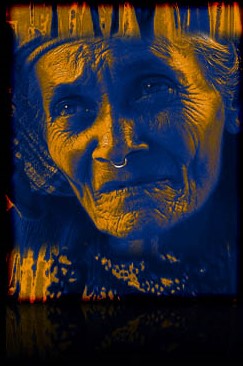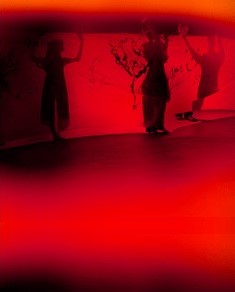Buried Traces
DOI:
https://doi.org/10.25071/1913-5874/37365Abstract
By the time I came to make this film, my grandfather had already passed on. There was no one in my family to speak about their experiences growing up Métis. It was in talking to Lorraine Freeman, a Métis community leader in Winnipeg, that I came to really comprehend the extent of racism and challenges of being a ‘halfbreed’ in the first half of the 20th century. My conversations with Lorraine helped me to see that the years of silence around our culture and identity was linked to a much broader colonial legacy.
When I was growing up if you said who you were, somebody was duking it out with you on the baseball diamond at recess. That’s just the way it was ‘cause we were nothing but dirty halfbreeds. My uncle told me one time he was speaking Michif to a friend of his and the nuns put his head down the outside toilet cause he was speaking this abomination of a language.
(Lorraine Freeman)
Lorraine was able to say what my family wasn’t. It is as if through this film, I was able to engage with Lorraine’s memory, to access the difficult experiences of my grandfather, to make sense of my family’s silence. Remembering the assault on the body, embodying this past, searching for a voice within this fraught identity.
Almond shaped eyes, lack of the carabelli cusp on the maxillary first molar, a wide space between the big toe and the second toe ...
Dispelling the myths of what "Indians" look like (Duffy 2010)
For people who call themselves Métis, the ongoing battle of who belongs, the struggle for political inclusion, is played out in the contested body of the “hybrid halfbreed”. Who we are is framed between fragmented memories, memories denied, images, stories, rumors, and a legacy of colonialism’s crusade for assimilation if not extermination. In the early 19th century, the physiology of the inferior non Anglo-Saxon was his/her cultural identity, a racial classification wherein, as Shohat and Stam write, “a mania for classification, measurement, and ranking – expressed in such pseudo-sciences as phrenology and craniometry – left no domain untouched. Every detail was mastered in the name of abstract hierarchies” (1994: 91). This racism disguised as science was particularly vicious towards persons of mixed race, “dreaded by racists as a monster, an infertile hybrid” (Pieterse in Shoat and Stam 1994: 91). This view shaped the life experience of the Métis Nation in very concrete ways. Bonita Lawrence notes how colonial surveyors classified halfbreeds and Indians based on racial indicators (2004: 88). Those that “looked and acted Indian” were classified as Indians. Others assimilated into the white majority. Yet others of this “mongrel” race remained on the margins, surviving in isolated communities, many just outside the boundaries of the reserve. Some, pushed off their land base, scrip squandered, became the “road allowance people”, making a life and settling on the thin strips of undesignated land on either side of the roadways.
I blur the boundaries between past and present – between Lorraine’s voice and my body, between historical footage and contemporary footage of me and my grandmother, between photos of Métis heroes and today’s prairie landscape. Contemporary lives and struggles are infused with the knowledge and experience of the past. I draw connections between current realities and the political repression and social exclusion that came before us. I layer images and suture fragments together. Our identities and memories are unstable and impermeable.
I survey my own body: Do high cheekbones or almond shaped eyes make you an Indian? To what extent do lived experience, historical affiliation, family lore, blood quantum and physiology play into notions of cultural identity? Who decides? How does self-identification manifest itself in relation to policy decisions and struggles for rights and recognition?
It is not my parents’ or grandparents’ experiences that I “remember”. They were silent about their trauma. Lorraine Freeman’s testimonial becomes my expression in a metaphorical sense, breaking down the division of past and present, infusing my own experience as a Métis person today with the knowledge and experience of this past. This “postmemory” invokes, as Lebow describes in reference to Chantal Ackerman’s work, “a broader, ancestral postmemory” (Lebow 2008 19) For me, Lorraine’s words reflect a collective experience that is life affirming and political. We are still here. We have survived.
Buried Traces has been selected and featured in a number of recent festivals and galleries, including: Images Festival 2009, Gimme Some Truth, Festival Prescence Autochtones, GIV summer festival, Métis Media Festival, FIFA 2011, Traverses Festival Toulouse, Métis Health: Culture, Identity, History conference, NAHO; Galleries and Curated Collections: Alternator Gallery Kelowna, Urban Shaman Winnipeg, Topo-vidéographies: Territoires/Territorios Montreal. Copies of the work can be ordered via GIV http://www.givideo.org/ang/indexA/videosA/A-299.html.
References
Duffy, Laurie Beth. http://imblackeagle.tripod.com/looks1.htm, last viewed October 24, 2011.
Freeman, Lorraine and Laroque, Nellie. Personal Interview, February 24, 2005.
Lawrence, Bonita. “Real” Indians and Others: Mixed Blood Urban Native Peoples and Indigenous Nationhood, University of Nebraska Press. Lincoln and London: 2004.
Lebow, Alisa S. First Person Jewish, University of Minnesota Press. Minneapolis: 2008.
Shohat, Ella and Stam, Robert. Unthinking Eurocentrism. Routledge. New York: 1994.





